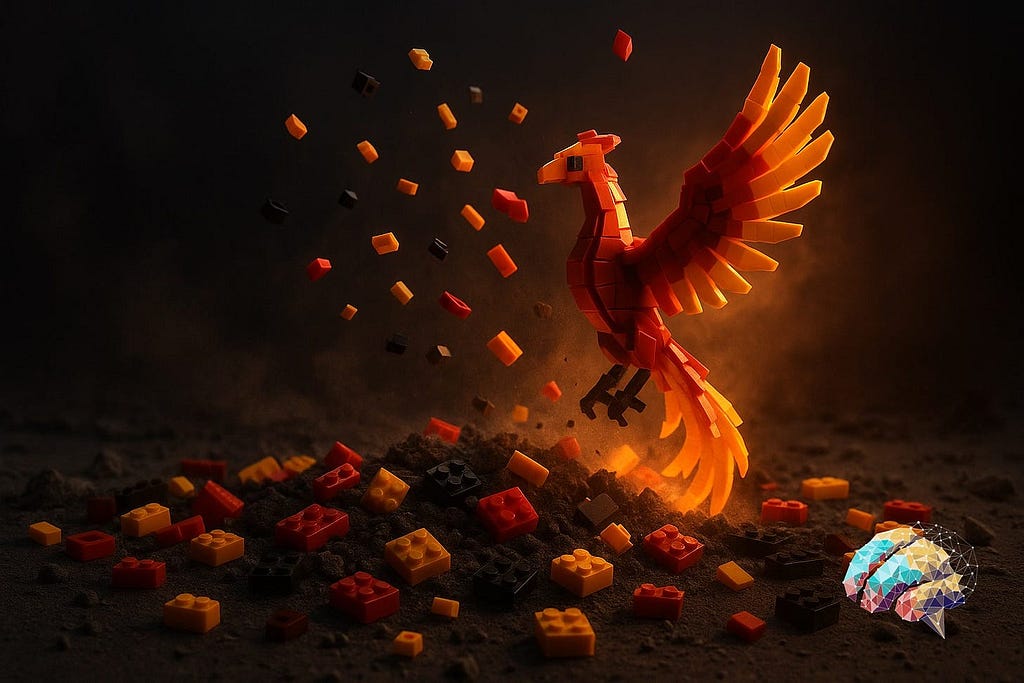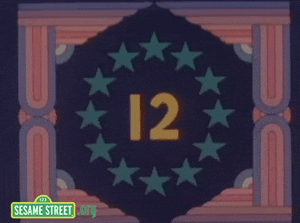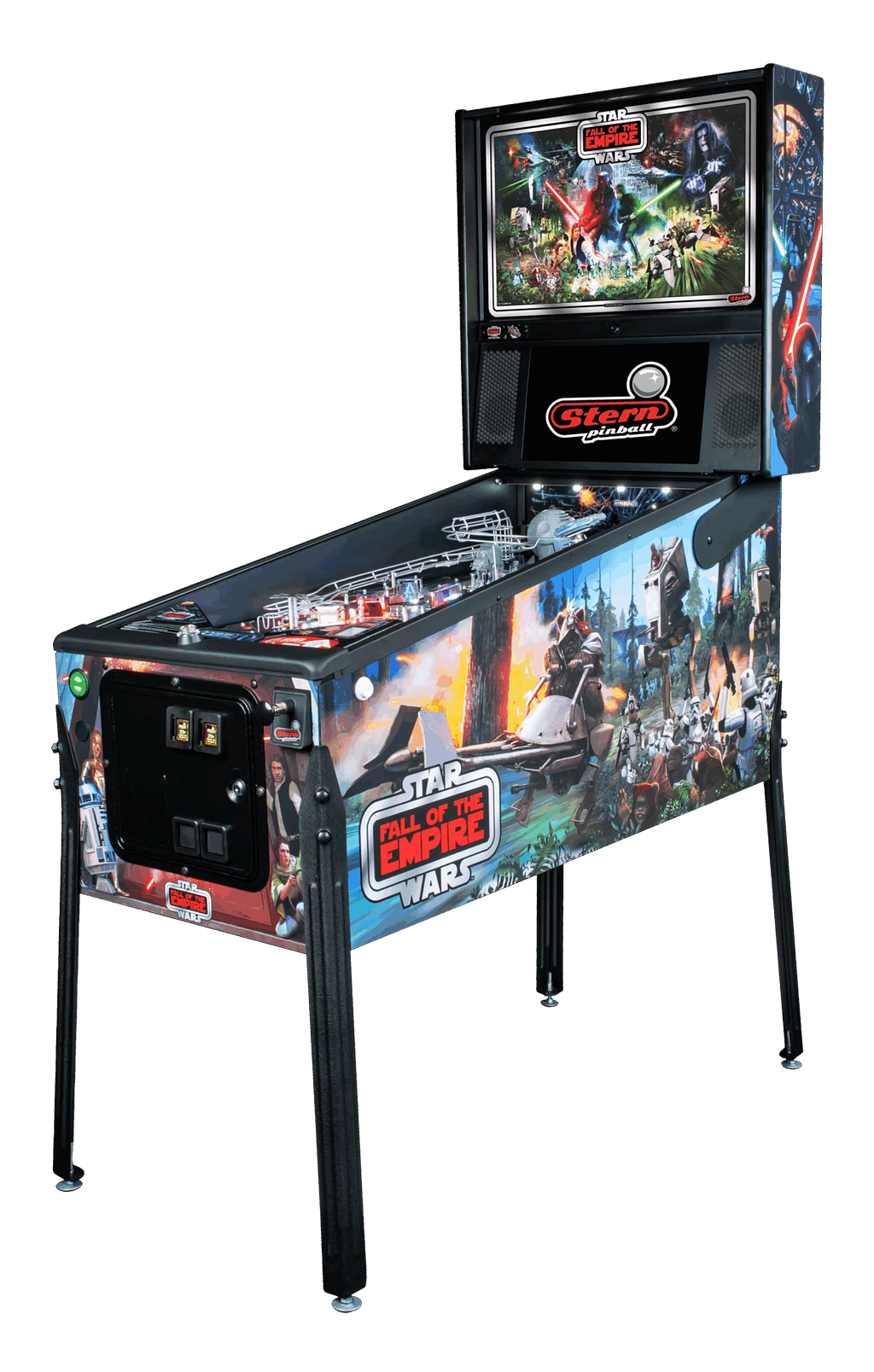“Death is nature’s way of making things continually interesting. Death is the possibility of change. Every individual gets its allotted lifespan, its chance to try something new on the world. But time is called and the molecules which make up leaf and limb, heart and eye are disassembled and redistributed to other tenants.” — Peter Steinhart, The Company of Wolves
In 1998, economist Martin Weitzman described this process as recombinant growth. He argued that the true constraint on progress isn’t the number of novel ideas we produce, but our ability to recombine existing components into usable projects.
Factories, labs, machines, industries — none are endpoints. They’re raw material, waiting to be remixed into new configurations of value. In Weitzman’s view, innovation is not a straight line of invention but a web of recombinations — an ever-expanding network of elements capable of forming infinite new arrangements.
Eventually, progress depends less on conjuring the new than on the re-assembly of what already exists.
At the human level, the same principle governs how we learn.
Learning Through Disassembly

In our latest episode of The Innovation Show, Manu Kapur, author of Productive Failure, explains that the deepest understanding doesn’t come from flawless performance, but from assembly. Students who are allowed and encouraged to struggle, to take concepts apart and rebuild them, develop what cognitive flexibility. This ability to see knowledge as modular, portable, and recombinable is essential in this age of rapid change.
In my book, I write about the Phoenix — the idea that there are assets in the ashes. The Phoenix does not emerge from nothing; it rises from what remains. Manu Kapur’s work shows that learning follows the same logic. True understanding is not created anew; it is reassembled from the fragments of our failed attempts, the residue of our prior models, and the ashes of what no longer serves us.
Think of a business model, organisation, or career as interlocking pieces of LEGO. While we can combine them to form countless structures, even just six rectangular 4×2 LEGO bricks can create an astonishing 915,103,765 combinations. Before you figure out what you’re going to build, you need to take stock of three things: your pieces, your imagination, and your willingness to experiment.
Good assembly in learning — and in life — means seeing ideas and experiences as components rather than finished systems. The value lies not in efficiency but in adaptability. When we learn only one way to solve a problem, we become rigid, like a structure built too tightly to evolve. But when we learn through recombining what we know, we build architectures that can flex and transfer across contexts.
Manu Kapur’s research shows that students who first attempt to solve complex problems before being taught the “right” solution perform worse in the short term but significantly better when faced with new problems later. They learn not just to apply knowledge, but to assemble it.
This mirrors how adaptive organisations behave. Both rely on the same principle transfer depends on flexibility, a willingness to take things apart, tolerate the uncertainty of in-between states, and reassemble them into something more resilient.
Organisational Reinvention

My friend Paul Nunes, in Big Bang Disruption, describes the terminal stage of organisational decline as Entropy. Entropy is the point at which a company can no longer survive in its existing form.
According to the Big Bang metaphor that gives the book its name, the matter and energy of a collapsing universe eventually regroup, combining to take on new forms. The same applies to organizations and industries. Entropy reflects the final phase of a dying market, when its remaining assets (often intangible) are smashed together to create new Singularities. Markets may persist for old products, but only as small pockets of nostalgia, serving eccentric customers who can’t quite let go of the past. The remaining assets of incumbents such as intellectual property, relationships, talent, capabilities can find new uses in other ecosystems or form the basis for new incarnations of the business.
It is at this stage that he offers some humbling, yet liberating advice:
“When you’re losing the war, become an arms merchant.” — Paul Nunes
That’s exactly what Texas Instruments did. Credited with inventing the integrated circuit, TI helped lay the foundations of the modern electronics era. Once a household name known for calculators, watches, and even early smartphones, it looked for a time as if TI might help define the mobile age. But the landscape shifted quickly. Major players such as Apple began designing their own chips, and the smartphone market consolidated around a few dominant ecosystems.
Rather than fight a losing battle for visibility, TI quietly stepped back from the consumer spotlight and refocused on what it had always done best — building the components that power everything else. It redirected its expertise and focused on hunting zones such as foundational semiconductor chips, the unseen circuitry behind cars, renewable energy systems, and industrial technologies.
By shedding its consumer identity, TI didn’t fade; it became infrastructure. It found renewal in recombining its core assets to serve a wider ecosystem. This is a perfect example of what Paul Nunes calls becoming someone else’s components.
Stern Pinball did something similar.

In the 1990s, as arcades collapsed and gaming consoles took off, nearly every pinball maker had gone under. Stern’s survival came not from defending the arcade market but by finding a new context — nostalgic homeowners who wanted a pinball machine in their living rooms.
And Foxconn has prospered by perfecting this strategy of recombination — not of its own components, but for others. As the world’s largest contract electronics manufacturer, it doesn’t own product brands, but it does assemble them. Its systems and scale make it indispensable to every generation of innovation. Recent quarters have shown record revenue growth with Foxconn’s shift into AI-driven cloud and infrastructure manufacturing. It has evolved from factory to foundation, as Taiwan Semiconductor did for chips.
From molecules to markets, from neurons to networks, longevity belongs to those who are willing to be disassembled and reinvented.
Reinvention of economies, organisations, or ourselves is not about defending a distinct form. It’s about becoming fluid enough that when time is called, our best parts can live on in new configurations.
Every new beginning really does come from some other beginning’s end.
Discover how embracing failure can supercharge learning, motivation, and mastery with Manu Kapur in the powerful finale of our Productive Failure series.
https://medium.com/media/26972c1825916ecf126ed3f2073ed008/href
And Big Bang Disruption with Paul Nunes:
https://medium.com/media/37e884b0d7b17e5d4196ae0a731a9ee5/href
Every new beginning comes from some other beginning’s end: The Art of Reassembly was originally published in The Thursday Thought on Medium, where people are continuing the conversation by highlighting and responding to this story.